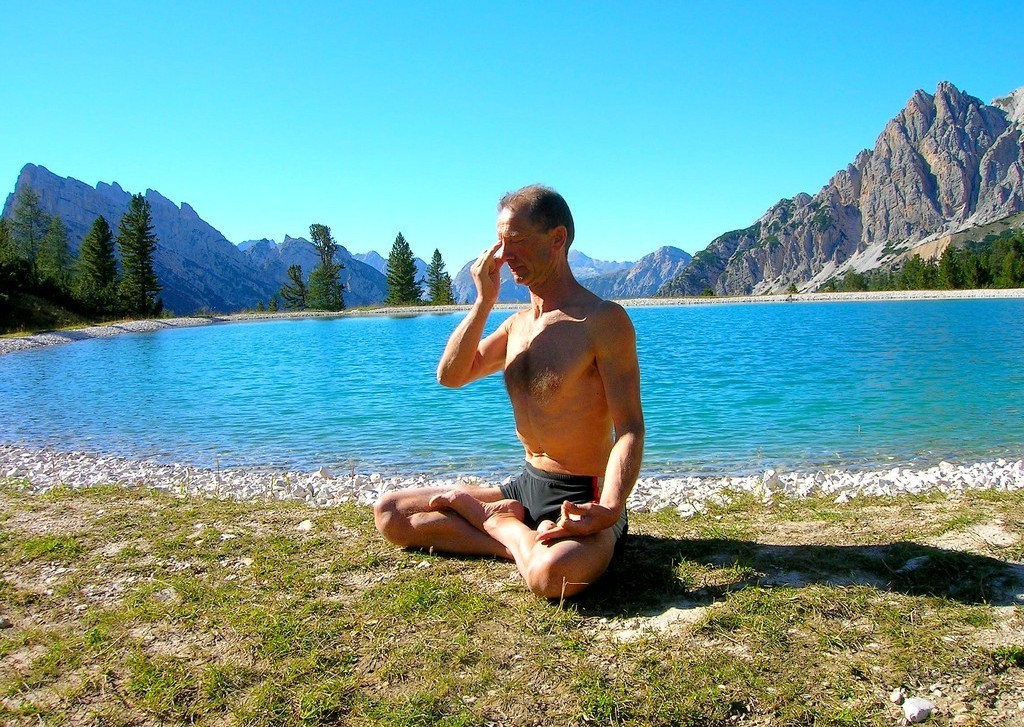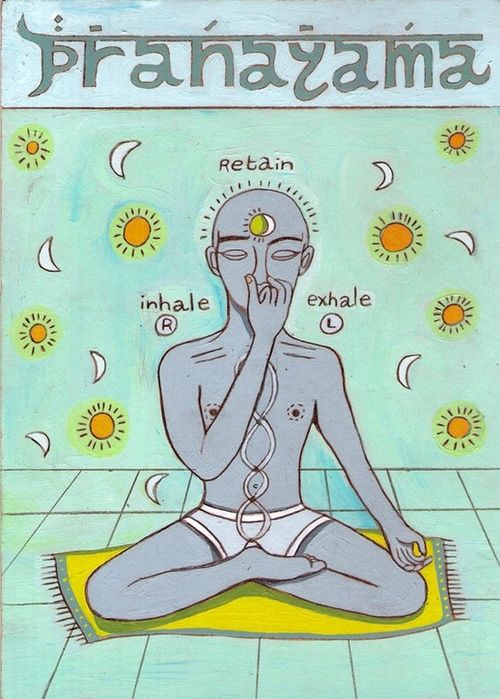 Pranayama is one of the most common Yoga Asanas that people perform because it is easy and provides numerous benefits.
Pranayama is one of the most common Yoga Asanas that people perform because it is easy and provides numerous benefits.
What Is Pranayama?
Pranayama is defined as stretching, lengthening or modifying the breath. Despite being an involuntary process, breathing can be voluntarily controlled and manipulated. Controlled breathing helps you have a better grip on your mind and your body.
To perform Pranayama, you can choose any meditative pose. If a meditative pose is difficult, you can opt for Sukhasana where the head, neck and spine are in a straight line. Focus on your breathing, try to feel each breath that you inhale and exhale from your nostrils. After you have done this, relax and spend some time to observe your entire body. Awareness should be present throughout the session.

Terminologies You Should Know:
- Purak –Breathing in
- Rechak –Breathing Out
- Kumbhak – Holding the breath.
There are various kinds of Pranayama. Here are a few of them.
1. Bhastrika Pranayama
‘Bhastra’ is the Bellows Pump used to pump fire. ‘Bhastrika’ originates from this term. People with high blood pressure must not perform Bhastrika. They can, however, perform a modified version. In Bhastrika Paranayama, one must breath in and breath out rapidly and forcefully. At the same time, they must flap the stomach in and out. When you breathe in, your stomach will expand and when you breathe out, your stomach will contract.
Benefits : Gases exchange at a very fast pace. Oxygen intake increases as the body throws out more Carbon Dioxide. There’s an increase in the Metabolic Rate as well.
2. Anulom – Vilom
Also known as Alternate Nostril Breathing, follows a slow and deep rhythmic breathing pattern. To perform this variation, close the left nostril and breathe in through the right nostril. Hold your breath for 3-5 seconds. Close the right nostril and breathe in through the left nostril. Hold it for 3-5 seconds to increase the absorption of oxygen.
Benefits: Useful for people suffering from Sinusitis. This Pranayama relaxes the mind and the entire nervous system. It improves lung capacity, strengthens the heart and improves blood circulation.
3. Sheetali Pranayama
This Pranayama is also called Cooling Breathing. Before performing Sheetali Pranayama, one must ensure that the atmosphere is clean. Roll the tongue and take a slow and deep breathe through the mouth. You will experience a cooling sensation on the surface of your tongue. Close the mouth and breathe out through the nostrils.
Benefits: It is very beneficial for people suffering from digestive disorders and acidity. This Pranayama also relaxes the mind.
4. Bhramari
It can be done towards the end of the session. Bhramari relaxes the mind and helps in blood circulation and circulation of Cerebrospinal fluid. Bhramari is also called Humming Bee Breath. Sitting in a meditation pose, breathe in through the nostrils (deep breath) and breathe out slowly, thereby, producing the humming sound like a Humming Bee. Inhalation and exhalation time will be the same.
5. Suryabhedan
Surya is referred to the right nostril and Bhedan is piercing. Breathing in through the right nostril and breathing out through the left nostril is called Suryabhedan. This energizing Pranayama stimulates the sympathetic nervous system, cleanses the skull and in the Hathapradipika, it is mentioned that the heat generated by this Pranayama will destroy the worms in the stomach.
6. Shitkari Pranayama
Also called the Hissing Breath, this Pranayama is performed by touching the teeth of the upper and lower jaw together and breathing in. You will experience a cooling sensation on the sides of the mouth and tongue. This is also a tranquilizing Pranayama. Regular practice of this will improve digestion and reduce acidity. It is a good practice for people suffering from insomnia. It is especially useful during Summer as it reduces the body’s temperature. While practicing this Pranayama, one must make sure that the atmosphere is clean.
Disclaimer: Please consult your GOQii Doctor before you start Pranayama. For further guidance, you can reach out to an expert by subscribing for Personalised Health Coaching here.
For more on Yoga and meditation, check out Healthy Reads.
We hope this article helps you! Do let us know your thoughts in the comments below.
#BeTheForce




nice blog thanks for the information
Can someone please help me with the rules for the Quarantine challenge?
Great info. Pranayama is an integral part of Yoga. Pranayama is the channel to the life source and once we make it a way of our life, we get closer to the levels of peace and spirituality that once we only dreamed of. You need to experience it to believe it.
Thank you so much for sharing a wonderful article. I would like to know more about Nadi Shodhan. Pranayam has worked wonderfully for me as I was able to manage stress levels. Since I am a yoga instructor, my students also shared that they were able to manage their stress, anxiety and BP issues.
nice one…thanks
Great article. I appreciate you effort to such a wonderful information
Pranayama is a Sanskrit word that means “control of breath.” Through pranayama, you can learn to control your breathing patterns and increase your energy levels. You can practice pranayama in a number of ways, including counting your breaths and deep breathing exercises.
Pranayama is the practice of breathing exercises. It is done to help increase oxygen intake, improve respiration and circulation, and reduce stress and anxiety.
It can be performed alone or in combination with other yoga poses.
There are several benefits of pranayama, including improved respiratory health and flexibility, as well as better concentration.
Pranayama is a type of yoga that involves the use of breath control and relaxation. It is an ancient practice that was popularized by the Buddha, who is considered to be the founder of yoga. Practitioners of pranayama have been known to use breathing techniques such as meditation, yoga, and meditation to relax and unwind.
Pranayam is one of the most common Yoga Asanas. I’ve also been practicing for a while, it’s very interesting and effective, but because the work is too tiring, I have gradually become lazy to practice.
Your article has helped me learn .more interesting knowledge today. You write very well.
I will follow these instructions in my personal lifesyle.
Wonderful article, I have just read. More interesting knowledge today. You write very well.
Thank you for sharing your experiences and insights on this topic. Your story is really inspiring and it’s great to see someone who is so passionate about their work.
This is, in my opinion, one of the best posts that you have made. Your work is quite outstanding in both quality and quantity. I am grateful to you for it
Amazing piece of writing, just read it. Today we learn even more fascinating things. Your writing is excellent.